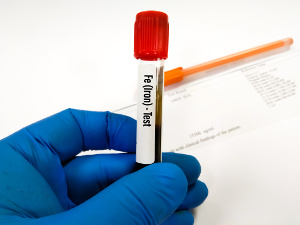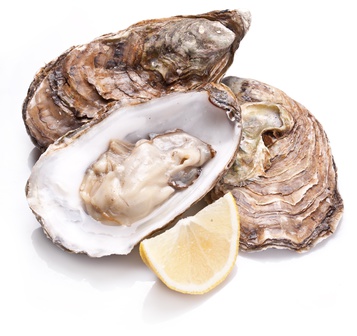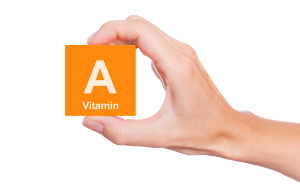- or too much?
 Lack of iron is the most widespread nutrient deficiency in the world and the most common cause of anemia. Iron deficiency causes fatigue, dizziness, paleness, impaired immunity, hair loss, and a host of other symptoms. It can cause stunted growth and learning difficulty in children. Some of the things that can cause iron deficiency are heavy menstrual bleeding, pregnancy, vegetarian/vegan diets, lack of vitamin C, antacids, inflammatory bowel diseases, and celiac disease. Excess iron, on the other hand, can also spell trouble by generating harmful free radicals that attack our cells. So, it is important not to get too little or too much iron – but just the right amount. In the following, you can read more about iron and its importance for our health.
Lack of iron is the most widespread nutrient deficiency in the world and the most common cause of anemia. Iron deficiency causes fatigue, dizziness, paleness, impaired immunity, hair loss, and a host of other symptoms. It can cause stunted growth and learning difficulty in children. Some of the things that can cause iron deficiency are heavy menstrual bleeding, pregnancy, vegetarian/vegan diets, lack of vitamin C, antacids, inflammatory bowel diseases, and celiac disease. Excess iron, on the other hand, can also spell trouble by generating harmful free radicals that attack our cells. So, it is important not to get too little or too much iron – but just the right amount. In the following, you can read more about iron and its importance for our health.
 Copper is an essential trace element. An adult contains around 100-150 micrograms of copper. Most of it is found in the liver, brain, kidneys, and heart. Fetuses and newborn babies have particularly high copper levels in their liver. In fact, the liver is believed to serve as an extra storage facility during lactation where the copper content in breastmilk is rather low.
Copper is an essential trace element. An adult contains around 100-150 micrograms of copper. Most of it is found in the liver, brain, kidneys, and heart. Fetuses and newborn babies have particularly high copper levels in their liver. In fact, the liver is believed to serve as an extra storage facility during lactation where the copper content in breastmilk is rather low.
 Sulphur is essential for plants and animals. An adult contains around 175 grams of sulphur. The nutrient is found in the amino acids cysteine and methionine and is therefore also present in all the proteins and enzymes that contain these amino acids. Sulphur is a component of those enzymes that are responsible for ensuring that the hemoglobin in red blood cells is able to bind oxygen. Sulphur is also a component of the disulfide bonds that give strength to skin, hair, and nails. The reason why bird eggs have such a high sulphur content is that the nutrient is needed for the plumage of the developing bird. Sulphur is able to bind heavy metals and other toxins. Sulphur is chemically similar to selenium, but sulphur is not an antioxidant and has other functions in the body.
Sulphur is essential for plants and animals. An adult contains around 175 grams of sulphur. The nutrient is found in the amino acids cysteine and methionine and is therefore also present in all the proteins and enzymes that contain these amino acids. Sulphur is a component of those enzymes that are responsible for ensuring that the hemoglobin in red blood cells is able to bind oxygen. Sulphur is also a component of the disulfide bonds that give strength to skin, hair, and nails. The reason why bird eggs have such a high sulphur content is that the nutrient is needed for the plumage of the developing bird. Sulphur is able to bind heavy metals and other toxins. Sulphur is chemically similar to selenium, but sulphur is not an antioxidant and has other functions in the body.
 Lack of iron is the most widespread nutrient deficiency in the world and the most common cause of anemia. Iron deficiency causes fatigue, dizziness, paleness, impaired immunity, hair loss, and a host of other symptoms. It can cause stunted growth and learning difficulty in children. Some of the things that can cause iron deficiency are heavy menstrual bleeding, pregnancy, vegetarian/vegan diets, lack of vitamin C, antacids, inflammatory bowel diseases, and celiac disease. Excess iron, on the other hand, can also spell trouble by generating harmful free radicals that attack our cells. So, it is important not to get too little or too much iron – but just the right amount. In the following, you can read more about iron and its importance for our health.
Lack of iron is the most widespread nutrient deficiency in the world and the most common cause of anemia. Iron deficiency causes fatigue, dizziness, paleness, impaired immunity, hair loss, and a host of other symptoms. It can cause stunted growth and learning difficulty in children. Some of the things that can cause iron deficiency are heavy menstrual bleeding, pregnancy, vegetarian/vegan diets, lack of vitamin C, antacids, inflammatory bowel diseases, and celiac disease. Excess iron, on the other hand, can also spell trouble by generating harmful free radicals that attack our cells. So, it is important not to get too little or too much iron – but just the right amount. In the following, you can read more about iron and its importance for our health.











 Copper is an essential trace element. An adult contains around 100-150 micrograms of copper. Most of it is found in the liver, brain, kidneys, and heart. Fetuses and newborn babies have particularly high copper levels in their liver. In fact, the liver is believed to serve as an extra storage facility during lactation where the copper content in breastmilk is rather low.
Copper is an essential trace element. An adult contains around 100-150 micrograms of copper. Most of it is found in the liver, brain, kidneys, and heart. Fetuses and newborn babies have particularly high copper levels in their liver. In fact, the liver is believed to serve as an extra storage facility during lactation where the copper content in breastmilk is rather low. Sulphur is essential for plants and animals. An adult contains around 175 grams of sulphur. The nutrient is found in the amino acids cysteine and methionine and is therefore also present in all the proteins and enzymes that contain these amino acids. Sulphur is a component of those enzymes that are responsible for ensuring that the hemoglobin in red blood cells is able to bind oxygen. Sulphur is also a component of the disulfide bonds that give strength to skin, hair, and nails. The reason why bird eggs have such a high sulphur content is that the nutrient is needed for the plumage of the developing bird. Sulphur is able to bind heavy metals and other toxins. Sulphur is chemically similar to selenium, but sulphur is not an antioxidant and has other functions in the body.
Sulphur is essential for plants and animals. An adult contains around 175 grams of sulphur. The nutrient is found in the amino acids cysteine and methionine and is therefore also present in all the proteins and enzymes that contain these amino acids. Sulphur is a component of those enzymes that are responsible for ensuring that the hemoglobin in red blood cells is able to bind oxygen. Sulphur is also a component of the disulfide bonds that give strength to skin, hair, and nails. The reason why bird eggs have such a high sulphur content is that the nutrient is needed for the plumage of the developing bird. Sulphur is able to bind heavy metals and other toxins. Sulphur is chemically similar to selenium, but sulphur is not an antioxidant and has other functions in the body. "After about one week of taking the Q10 supplement I could feel a huge difference," says 23-year old Alan Piccini, who has been suffering from extreme fatigue and muscle aches ever since he was a child.
"After about one week of taking the Q10 supplement I could feel a huge difference," says 23-year old Alan Piccini, who has been suffering from extreme fatigue and muscle aches ever since he was a child. “Taking capsules with co-enzyme Q10 has freed me of the severe side effects of my cholesterol lowering medicine,” Mrs Franken explains.
“Taking capsules with co-enzyme Q10 has freed me of the severe side effects of my cholesterol lowering medicine,” Mrs Franken explains.